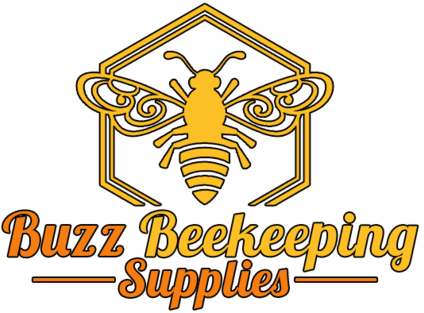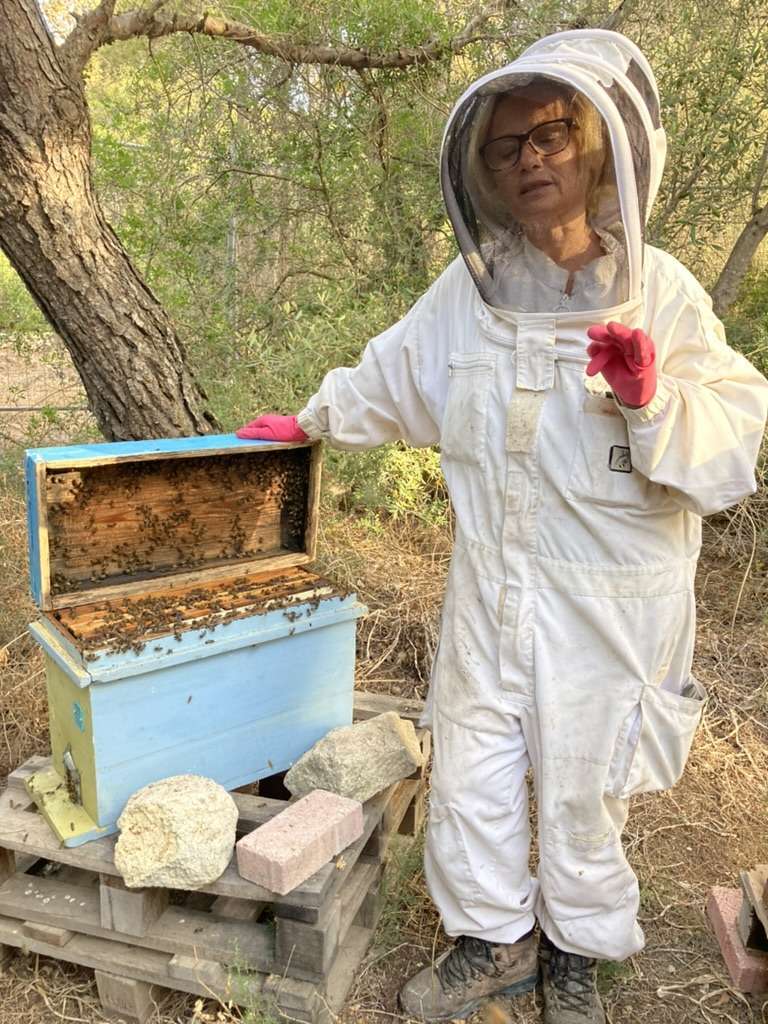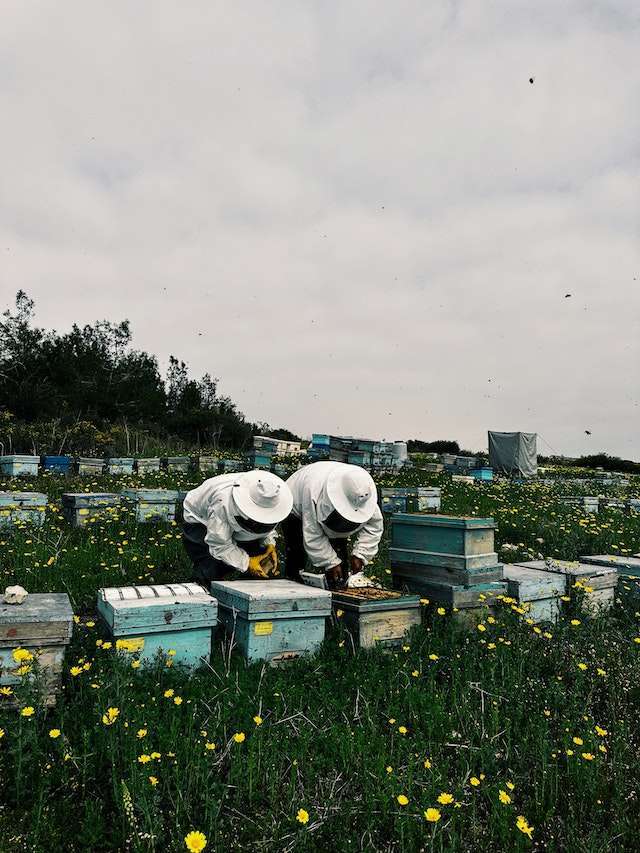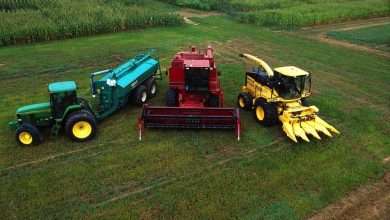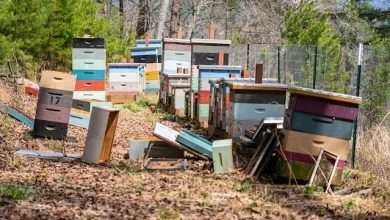Should You Wash Your Beekeeping Suit? A Guide to Proper Suit Maintenance

Beekeeping is a craft that requires knowledge, commitment, and a good understanding of proper safety and maintenance needs for your gear. Proper suit maintenance is essential to keep you and your bees safe. Cleaning and proper suit care will help to protect your suit from accumulating wax, propolis, and sweat, as well as from sun-fading.
Beekeeping suits can provide very effective protection and should be washed regularly for maximum protection and longevity. But knowing when and how to wash your suit can be a challenge. To help, this article will discuss the importance of washing your beekeeping suit and the best way to do it.
Importance of Wearing a Beekeeping Suit
Before diving into the discussion of suit maintenance, it is crucial to emphasize the importance of wearing a beekeeping suit. Whether you are a beginner beekeeper or an experienced apiarist, protecting yourself from bee stings is paramount.
A beekeeping suit acts as a barrier, shielding you from potential stings and venomous attacks. It not only protects your body, but also your confidence, allowing you to work peacefully around your hives without the constant worry of getting stung.
Additionally, a beekeeping suit plays a vital role in preventing any potential harm to the bees themselves, as sudden movements or provocation can disturb their delicate balance.
Types of Beekeeping Suits
- Ventilated Beekeeping Suits: These suits are designed with breathable fabric and mesh panels strategically positioned to enhance airflow. While they provide excellent airflow, these suits may be more challenging to clean due to their intricate design. Always follow the manufacturer’s instructions for cleaning ventilated suits to preserve their performance and breathability.
- Canvas Beekeeping Suits: Known for their durability, canvas suits are a popular choice among beekeepers. Made from sturdy, heavy-duty fabric, these suits offer superior protection against bee stings. Cleaning canvas suits typically involves machine or hand washing with mild detergent.
The Elements that Contaminate a Beekeeping Suit
- Propolis: One of the primary elements that can contaminate a beekeeping suit is propolis. Bees use propolis as a sealant, covering the hive’s cracks and crevices. This resinous substance is sticky and can easily cling onto your suit, potentially harboring bacteria and pathogens.
- Honey: Another common contaminant found on beekeeping suits is honey. Bees produce this sweet substance by collecting nectar from flowers. While honey is a delightful treat for us, it can attract ants, bees, and other insects to your suit if not cleaned properly.
- Pollen: Bees are responsible for transferring pollen from flower to flower, aiding in the reproduction of plants. As a byproduct of this process, beekeepers may find traces of pollen on their suits. While pollen itself may not pose a direct threat, it can still contribute to the accumulation of dirt and potential disease-carrying agents.
- Bee Venom: Bee stings are an inevitable part of beekeeping. The venom injected by bees during a sting can leave residues on your beekeeping suit. These venom residues not only irritate the skin but can also attract more bees, increasing the chances of further stings.
To Wash or Not to Wash?
Now that we understand the significance of wearing a beekeeping suit, let’s address the dilemma of whether or not to wash it. While some beekeepers argue for regular washing to maintain cleanliness and hygiene, others advocate for less frequent or even no washing at all. Let’s explore both perspectives and provide you with clarity on suit maintenance.
The Case for Washing:
- Hygiene and Odor Control: Beekeeping can be a messy endeavor, involving propolis, honey, and other sticky substances. Regular washing of your beekeeping suit will help maintain cleanliness and prevent the accumulation of debris. Moreover, washing can help eliminate any unpleasant odors that may develop over time, ensuring a more pleasant beekeeping experience.
- Disease Prevention: Beekeeping suits may inadvertently come into contact with pathogens or contagious bee diseases. Washing your suit can help reduce the likelihood of cross-contamination between different hives or apiaries, preventing the potential spread of harmful diseases and safeguarding the well-being of your bee colonies.
- Prolong Lifespan: Regular washing and proper care can extend the lifespan of your beekeeping suit. By removing dirt, stains, and residues, you prevent unnecessary wear and tear, maintaining its functionality and protecting your investment.
- Reducing Allergies and Irritation: Some beekeepers may develop allergies or skin irritations when exposed to bee products regularly. Washing your suit helps remove these substances, minimizing the risk of allergic reactions and discomfort.
The Case Against Washing:
- Bee Familiarity: Bees recognize familiar scents, including the natural pheromones and odors of beekeepers. Regular washing may remove these familiar scent markers, causing bees to become agitated or more defensive during hive inspections. Some beekeepers believe that avoiding washing allows them to maintain a better rapport with their bees.
- Natural Scent Masking: Similar to the previous point, certain beekeepers argue that the natural odors accumulated on an unwashed suit can help mask the human scent, making it less likely for bees to perceive beekeepers as intruders. This perspective views washing as a potential disruption to the delicate harmony within the hive.
Suit Maintenance Best Practices:
Considering both perspectives, here are some suit maintenance best practices to help you strike the right balance:
- Spot Cleaning: Rather than subjecting your beekeeping suit to frequent washing, opt for spot cleaning. Gentle scrubbing using a soft brush and mild soap can effectively remove stains and residues without completely washing away familiar scents.
- Good Ventilation: After each use, allow your beekeeping suit to breathe and air out. Hang it in a well-ventilated area to dry, eliminating any moisture that may promote mold or unpleasant odors.
- Regular Inspection: Prioritize regular inspection of your suit for any signs of wear and tear, loose seams, or damaged zippers. Addressing these issues promptly will help maintain its integrity and ensure your safety.
The Importance of Maintaining Hygiene for Disease Prevention
One of the crucial reasons why washing your beekeeping suit is necessary is to prevent the spread of diseases among bees. Bees can suffer from numerous ailments, including bacterial, viral, and fungal infections. If your suit, contaminated with pathogens, comes into contact with healthy bees or their hive, it can lead to a devastating outbreak.
Regular washing helps eliminate any potential sources of contamination, significantly reducing the risk of disease transmission. It ensures that your beekeeping suit remains clean and free from harmful microorganisms that could harm both you and your bee colonies.
How Regular Washing Can Extend the Longevity of the Suit
Beyond preventing disease transmission, regular washing also plays a significant role in extending the longevity of your beekeeping suit. A clean suit maintains its structural integrity, reducing the risk of tears or holes that could compromise its effectiveness as protective gear.
Additionally, washing your suit regularly removes propolis, honey, pollen, and venom residues that can degrade the material over time. Accumulated substances may lead to fabric discoloration, deterioration, or the growth of unwanted microorganisms.
By incorporating proper washing habits into your routine, you not only ensure a healthy and safe environment for your bees but also increase the lifespan of your beekeeping suit, saving you both time and money in the long run.
Washing Tips and Guidelines
Here are some valuable tips and guidelines for washing your beekeeping suit effectively.
– Pre-washing Preparations – Removing Excess Debris
Before immersing your beekeeping suit in water, it is crucial to eliminate any excess debris it may have amassed during hive inspections or other beekeeping activities. Start by gently brushing off any loose dirt or pollen using a dry soft brush or cloth.
Be sure to pay attention to the cuffs, collars, and other areas where debris tends to accumulate. This pre-washing step will prevent unnecessary clogging in your washing machine and ensure a thorough clean.
– Suitable Washing Methods – Handwashing vs. Machine Washing
When it comes to washing your beekeeping suit, you have two primary options – handwashing or machine washing. Both methods have their merits, so the choice ultimately depends on personal preference and convenience.
- Handwashing: Handwashing allows for more precise control over the cleaning process and is ideal for suits made from delicate materials. Fill a clean basin or sink with lukewarm water and add a mild detergent suitable for delicate fabrics. Gently agitate the suit in the water, paying close attention to stained or soiled areas. Rinse thoroughly, ensuring all detergent residue is removed. Squeeze out excess water, but avoid wringing to maintain the suit’s shape.
- Machine Washing: Machine washing provides convenience and efficiency, especially for suits made from durable materials. Before placing your suit in the machine, ensure that all zippers and fastenings are securely closed to prevent tangling or damage. Choose a gentle cycle with cold or lukewarm water and add a mild detergent suitable for the fabric. Once the cycle is complete, promptly remove the suit to prevent wrinkles and allow for proper drying.
– Appropriate Temperature and Detergent for Washing the Suit
The temperature and detergent choice are essential factors to consider when washing your beekeeping suit. It is generally recommended to use lukewarm water, as hot temperatures can damage certain fabrics or cause shrinkage.
Avoid using bleach or harsh chemicals that could compromise the suit’s integrity. Instead, opt for a mild detergent specifically designed for delicate fabrics. These detergents effectively remove stains and odors without causing harm.
– Drying Techniques – Air Drying vs. Machine Drying
Proper drying techniques are crucial to ensure that your beekeeping suit remains in optimal condition. There are two primary drying methods – air drying and machine drying.
- Air Drying: Air drying is the gentlest and preferred method for drying beekeeping suits. Hang the suit on a clothesline or a drying rack, ensuring it is exposed to adequate airflow. Avoid direct sunlight, as prolonged exposure can fade the fabric. Ensure the suit is completely dry before storing it to prevent mold or mildew growth.
- Machine Drying: If time is a constraint, machine drying on a low heat setting can be an alternative. However, exercise caution to prevent any potential shrinkage or damage. Remove the suit from the machine as soon as it is dry to prevent unnecessary wrinkling.
Maintenance and Storage Tips
Regular inspection, maintenance, and proper storage are critical to ensure the durability and effectiveness of any beekeeping suit.
– Storing the Beekeeping Suit Properly to Prevent Damage
Proper storage of your beekeeping suit is crucial to avoid unnecessary damage. Follow these tips to ensure its longevity:
- Clean and dry: Before storing your suit, always make sure it is clean and thoroughly dry. Any traces of pollen, honey, or propolis left can attract pests or lead to deterioration.
- Dark and cool environment: Store the suit in a cool, dark area to prevent exposure to direct sunlight, which can weaken the fabric over time. A closet or a dedicated storage container in a shaded room can be ideal choices.
- Hanging or folding: Depending on the available space, you can either hang your beekeeping suit using a sturdy hanger or carefully fold it. Hanging can prevent creases and maintain the suit’s shape, while folding is suitable for compact storage.
– Regular Inspection for Tears, Loose Seams, or Worn-Out Components:
To ensure your beekeeping suit provides optimal protection, it is essential to conduct regular inspections. By identifying any issues promptly, you can address them before they worsen. Follow these steps:
- Thorough examination: Before each use, carefully inspect the entire beekeeping suit, focusing on seams, zippers, veils, and other critical areas. Look for any tears, loose threads, or signs of wear that may compromise its integrity.
- Repairing minor damages: If you detect any minor tears or loose seams, consider repairing them immediately. Use a sturdy needle and thread to mend small tears or loose threads. Applying a patch made from similar fabric can reinforce weakened area
When to Replace Your Beekeeping Suit
Over time, the fabric in your beekeeping suit can become worn or faded, even with proper care and maintenance. Therefore, it is important to inspect the suit periodically to check for signs of wear and tear. If the suit is damaged or worn, it should be replaced to ensure optimal safety and performance while beekeeping.
Conclusion
As a responsible beekeeper, the decision on whether or not to wash your beekeeping suit ultimately depends on your personal preferences, experiences, and assessment of the hive dynamics. Assess the hygiene needs and the behavior of your bees while considering the arguments presented in this chapter.
By finding the right balance between cleanliness and preserving the hive’s delicate ecosystem, you can confidently pursue your apiary activities while safeguarding yourself and your buzzing companions.
FAQ’s
How often should I wash my beekeeping suit?
- It is best to wash your beekeeping suit after every use to maintain its cleanliness and prevent the accumulation of dirt, pollen, or propolis that can attract bees or hinder visibility.
Can I tumble dry my beekeeping suit?
- It is generally recommended to air dry your beekeeping suit instead of tumble drying it. High heat from the dryer can damage the suit’s fabric or melt delicate components like zippers or veils. Hang the suit in a shaded area to dry completely.
Should I store my beekeeping suit in a specific way?
- When not in use, it’s best to store your beekeeping suit in a cool, dry place, away from direct sunlight or extreme temperatures. Hang it on a sturdy hanger and ensure it is completely dry to prevent mildew or mold growth.
How frequently should I inspect my beekeeping suit for wear and tear?
- Regularly inspect your beekeeping suit before each use. Look for signs of wear, loose threads, damaged veils, or compromised zippers. By detecting any issues early on, you can fix or replace the suit as needed, ensuring your safety when working with bees.
Can I use stain repellents or fabric softeners on my beekeeping suit?
- It is not recommended to use stain repellents or fabric softeners on your beekeeping suit. These products can contain chemicals that might be attractive or harmful to bees. Stick to mild detergents specifically designed for delicate fabrics to clean your suit effectively.
What is the average lifespan of a beekeeping suit?
- The lifespan of a beekeeping suit depends on various factors such as usage frequency, maintenance, and quality of materials. With proper care and timely repairs, a good-quality beekeeping suit can last several years. However, it is essential to monitor its condition and replace it if significant wear or tear is detected.
Remember to always follow proper maintenance protocols to ensure your beekeeping suit remains clean, functional, and offers optimal protection while working with bees.
